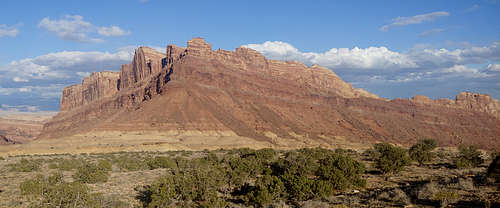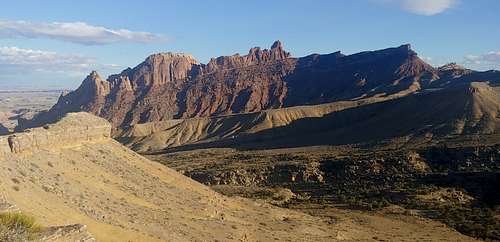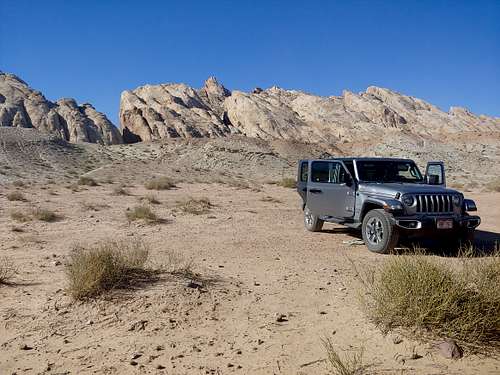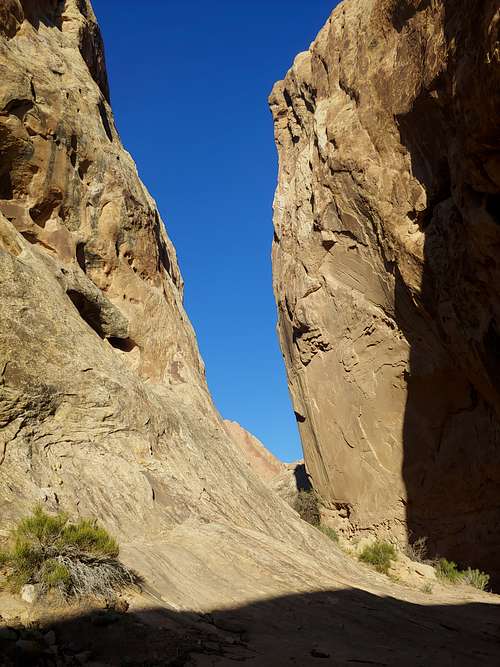-
 662 Hits
662 Hits
-
 76.66% Score
76.66% Score
-
 7 Votes
7 Votes
|
|
Mountain/Rock |
|---|---|
|
|
38.88300°N / 110.455°W |
|
|
Trad Climbing, Sport Climbing, Scrambling, Canyoneering |
|
|
Spring, Fall, Winter |
|
|
5900 ft / 1798 m |
|
|
Overview
As you drive east across the San Rafael Swell towards Green River, there is a signed scenic overlook of Spotted Wolf Canyon just before I-70 makes a steep descent to the desert plains below.
That overlook provides an excellent view of the backside and other parts of the San Rafael Reef, but the climbing is on the other side among what are called the B Crags.
The B Crags are in and around Little Spotted Wolf Canyon. Included are the Eastern Reef's longest non-traversing climb, the Great North Ridge, and Super Crack of the Reef, a 2-pitch 5.10 that apparently has still not seen a free ascent. There are several other single- and multi-pitch routes from 5.5 to 5.12.
Especially in the lower grades, expect adventure climbing on sandy, weak rock with big runouts. Much of the protection you will find won't feel too meaningful. If you're a new multi-pitch trad leader, don't start thinking the 5.6 Great North Ridge sounds just about perfect; you'll probably be terrified.
That said, if you enjoy adventure climbing in spectacular and remote settings and you have a head for runout and slab, you'll love this place.
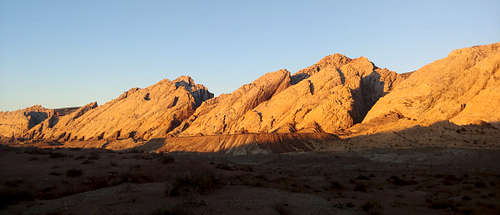
Getting There
There are 2 main ways to access the crags.
Routes
From the parking area, you can see Little Spotted Wolf Canyon. Drop into the wash close by and follow it for several minutes. I'm not sure if one of its spurs eventually reaches the mouth of the canyon; we struck out and went up and over a ridge and then followed a wash into the mouth. On the way back, we took a more direct way via the ridges.
Red Tape
Just obey posted regulations.
When to Climb
Anytime, though summers are brutally hot out here and there is little shade.
Camping
Dispersed


